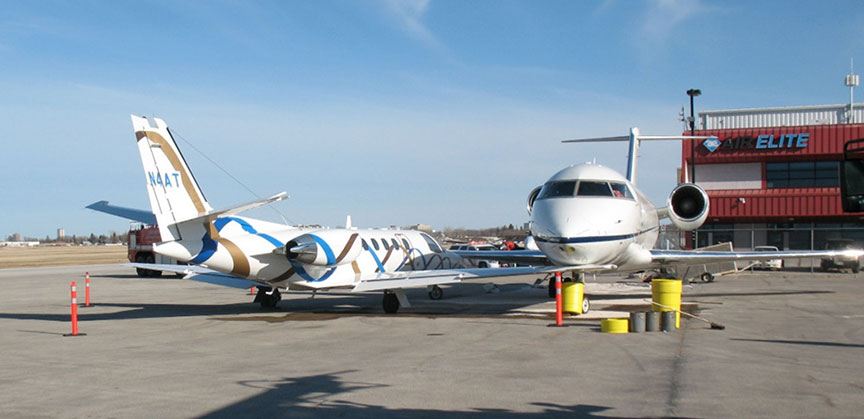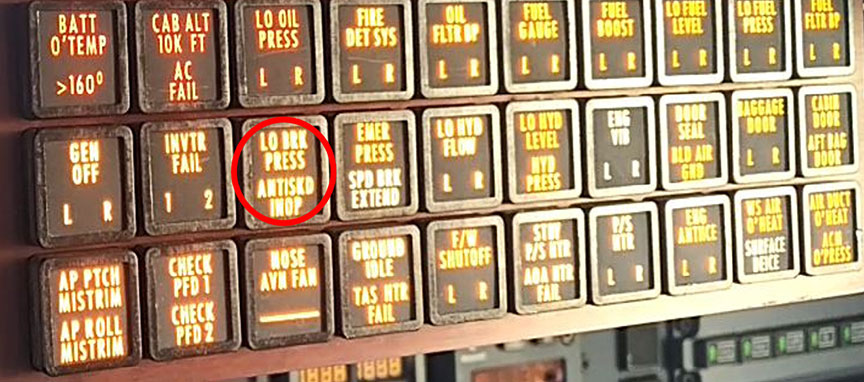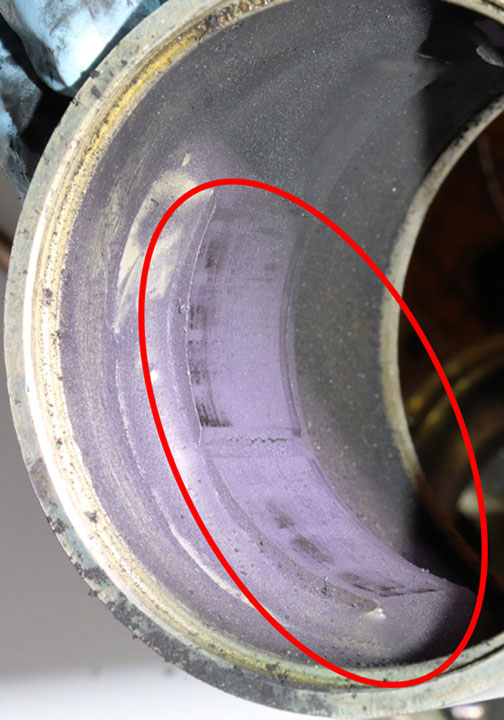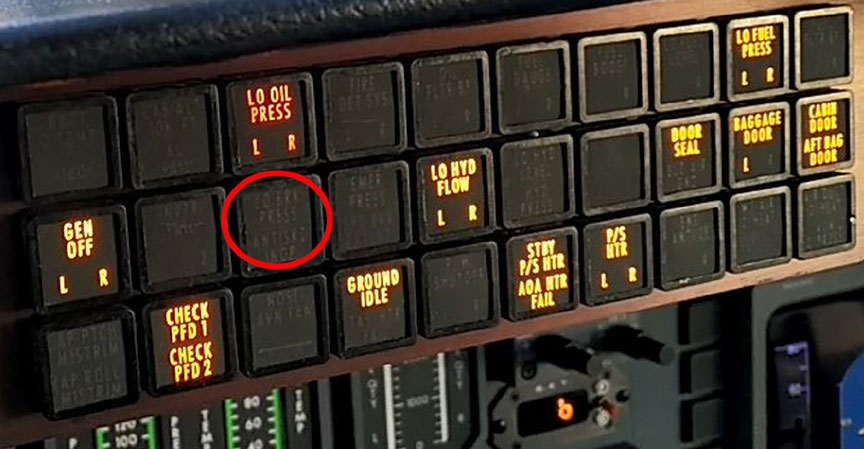Brake failure and ground collision
Private Cessna Citation Bravo 550, N4AT
and
Morningstar Partners Ltd., Bombardier CL-600-2B16, C-FXWT
Winnipeg/James Armstrong Richardson International Airport, Manitoba
The Transportation Safety Board of Canada (TSB) investigated this occurrence for the purpose of advancing transportation safety. It is not the function of the Board to assign fault or determine civil or criminal liability. This report is not created for use in the context of legal, disciplinary or other proceedings. See Ownership and use of content. Masculine pronouns and position titles may be used to signify all genders to comply with the Canadian Transportation Accident Investigation and Safety Board Act (S.C. 1989, c. 3).
History of the flight
On 15 April 2018, the privately registered Cessna Citation Bravo 550 (Cessna) aircraft (U.S. registration N4AT, serial number 550-0805) was conducting a flight from Calgary International Airport (CYYC), Alberta, to Bedford/Laurence G. Hanscom Field Airport (KBED), Massachusetts, United States, with a fuel stop at Winnipeg/James Armstrong Richardson International Airport (CYWG), Manitoba.
The Cessna landed on Runway 36 at CYWG at 1435Footnote 1 and taxied to Apron II with the pilot and 1 passenger on board. A ground marshaller guided the aircraft to park at the Fast Air Jet Centre's ramp. Once the aircraft was shut down at the assigned parking spot, the pilot and passenger waited in the passenger lounge while the aircraft was fuelled.
Approximately 20 minutes later, once fuelling was complete, the pilot and passenger returned to the aircraft and prepared for departure to KBED. The engines were started under the guidance of a ground marshaller. As the aircraft engine power was applied to begin the taxi, the pilot attempted to turn left to taxi toward Taxiway C, and away from other aircraft on the apron, by applying left rudder pedal input and left brake. The aircraft did not respond to the brake input and did not turn as expected. Because the aircraft was not turning, but was accelerating, the pilot attempted to stop it by applying pressure to both brake pedals. However, the aircraft brakes did not respond and the aircraft continued to accelerate. The pilot did not attempt to apply the emergency brake.
The Cessna's right wing subsequently collided with the nose gear of a Morningstar Partners Ltd. Bombardier CL-600-2B16 (Challenger 605) aircraft (registration C-FXWT, serial number 5824), which was parked facing the Cessna. As the Cessna's right wing contacted the Challenger 605's nose gear, the Cessna pivoted right and its nose contacted the Challenger 605's right wing (Figure 1).
The pilot of the Cessna subsequently shut down the aircraft's engines, and he and the passenger exited the aircraft through the cabin door. Neither was injured. Fuel was observed leaking from the Cessna's right wing, and ground crew used a spill response kit to ensure the leak was contained. The ground crew also reported the collision by phoning the airport fire hall directly. There was no fire, and the emergency locator transmitter did not activate.
As a result of the collision, both aircraft sustained substantial damage.
Pilot information
The pilot of the Cessna held a U.S. Airline Transport Pilot Licence, which was endorsed for the Cessna Citation 550, and a valid medical certificate. He had completed his annual recurrent ground and flight training from 12 to 14 June 2017, and had completed a U.S. Federal Aviation Administration–approved Single Pilot Exemption 9899 Course from 29 January to 01 February 2018, which allows U.S. pilots to operate U.S.-registered Cessna Citation 500, 550, 550S, and 560 aircraft with a single pilot.Footnote 2 The pilot had accumulated over 3500 hours of total flight time, of which 3000 hours were on the occurrence aircraft.
Aircraft information
General
The Cessna Citation Bravo 550 is a pressurized, turbo-fan–powered corporate aircraft. The occurrence aircraft was manufactured in 1997 by the Cessna Aircraft Company/Textron Aviation. It has a maximum operating altitude of 43 000 feet above sea level and is equipped with retractable landing gear. The aircraft has a total seating capacity of 10, including the pilot and co-pilot seats. The aircraft is approved for day and night visual flight rules and instrument flight rules operations. The occurrence aircraft is registered in the U.S. and is maintained in accordance with FAA regulations.
Weight and balance
The occurrence aircraft has an empty weight of 9173 pounds and a maximum take-off weight of 14 800 pounds. At the time of the occurrence, it had 4860 pounds of fuel on board and a total gross weight of 14 758 pounds. The aircraft was within the allowable weight and centre of gravity limitations for the intended flight.
Hydraulic brake system
The occurrence aircraft is equipped with a hydraulic, multi-disc, anti-skid/power brake system. The anti-skid provides maximum braking efficiency by preventing the wheels from locking up, while the power brake allows for smooth, power-assisted braking action. When the aircraft is ground manoeuvring at speeds of less than 12 knots, the anti-skid function is disabled.
Hydraulic pressure for the anti-skid/power brake system is provided by a hydraulic pump driven by an electric motor that is controlled by a pressure switch, which opens when the system pressure reaches 1300 psi and closes at 900 psi. An accumulator is incorporated to maintain system pressure when the pump is not running. If the system pressure drops below 750 psi, a low-pressure switch closes and illuminates the amber LO BRK PRESS (low brake pressure) light on the annunciator panel (Figure 2).
Power braking action is actuated by the master cylinders that are connected to the top of each rudder pedal and that are commonly referred to as toe brakes. When the pilot applies the toe brakes, hydraulic pressure produced by the master cylinders actuates the power brake and anti-skid valve that applies power-assisted braking action to the wheels.
Emergency brake
In the event of a hydraulic brake system failure, including a brake pump failure, braking action is only available through the emergency/pneumatic brake system. The aircraft is equipped with an emergency air bottle, which supplies high-pressure air for emergency braking action and emergency landing gear extension. The emergency brake is controlled by a hand-operated valve located under the instrument panel that directs high-pressure air to each brake.
Inspection of brake components
The hydraulic motor and pump assembly (part number MP50B-1) and power brake low-pressure switch (part number 9912163-1) were shipped to the TSB Engineering Laboratory in Ottawa, Ontario, for further inspection.
Hydraulic motor and pump assembly
The TSB's on-site examination of the aircraft and subsequent laboratory testing of the hydraulic motor and pump assembly revealed that it would not operate. Disassembly of the motor revealed excessive wear of the armature bearings and scarring on both the armature (Figure 3) and the stator (Figure 4). The scarring is indicative of the armature making contact with and binding against the stator.
The hydraulic motor and pump assembly is maintained according to an on-condition maintenance requirement, which consists of a scheduledFootnote 3 visual inspection and a system operational check, as specified by the aircraft manufacturer. The last scheduled visual inspection was completed on 01 May 2017, approximately 82 flight hours prior to the occurrence. No abnormalities were noted or recorded.
The FAA defines “on-condition” as follows:
Power brake low-pressure switch
On-site examination revealed that the LO BRK PRESS annunciator light would not illuminate when the brake pressure was below 750 psi (Figure 5).
Laboratory testing of the power brake low-pressure switch revealed that the switch was in a constant open state.Footnote 5 Further analysis revealed internal contamination with hydraulic fluid and damage to the secondary seal. The pressure plate was found jammed in the open position, likely the result of corrosion caused by hydraulic fluid. The open state of the switch prevented the power brake low-pressure light on the annunciator panel from illuminating in a low-brake-pressure situation.
Maintenance of the power brake low-pressure switch consists of a scheduledFootnote 6 visual inspection and a system operational check and is maintained according to an on-condition maintenance requirement. The last scheduled visual inspection was completed on 01 May 2017, approximately 82 flight hours prior to the occurrence. No abnormalities were noted or recorded.
Emergency response
After the collision, Fast Air Jet Centre staff initiated fuel containment procedures, including covering a drain with a rubber pad and creating a barrier to prevent fuel from entering the drain. A plastic barrel was also placed under the Cessna's wing to capture the leaking fuel.
The phone call from Fast Air Jet Centre staff was made directly to the airport fire hall rather than to the airport's emergency phone number, and the caller did not specify that 2 aircraft had collided and a significant fuel spill was occurring. When the airport's fire department arrived at Apron II and the scale of the incident was observed, the airport's emergency response was activated by emergency response staff.
During the post-incident clean up, it was estimated that 55 L of fuel was recovered from the ground and 30 L was captured in the barrel.
Safety messages
In this occurrence, the emergency brake system was not activated when the aircraft did not respond to the brake pedal inputs prior to the collision. Pilots should be cognizant that malfunctions may occur at any time, and they should be prepared to initiate emergency procedures. Conducting a brake check to verify proper brake operation on initial movement of the aircraft may alert pilots to issues with the brake system.
This occurrence also highlights the importance of notifying the appropriate agency when a significant incident occurs to ensure that hazards are properly contained. Because the fire hall was called directly, the scale of this incident was not captured in a timely manner. The operator of the airport's emergency phone line is trained to ask specific questions to ensure that the scale of the incident is captured and that a proper emergency response is initiated.
Safety action taken
The Winnipeg Airports Authority has reminded all of its tenants of the importance of calling the appropriate airport emergency phone number for all airport-related emergencies. It has also created posters that can be placed around the airport facilities to remind staff of the phone numbers to call in the event of an airport-related emergency.
This concludes the TSB's limited-scope investigation into this occurrence. The Board authorized the release of this investigation report on . It was officially released on .




